Last Updated on December 13, 2023
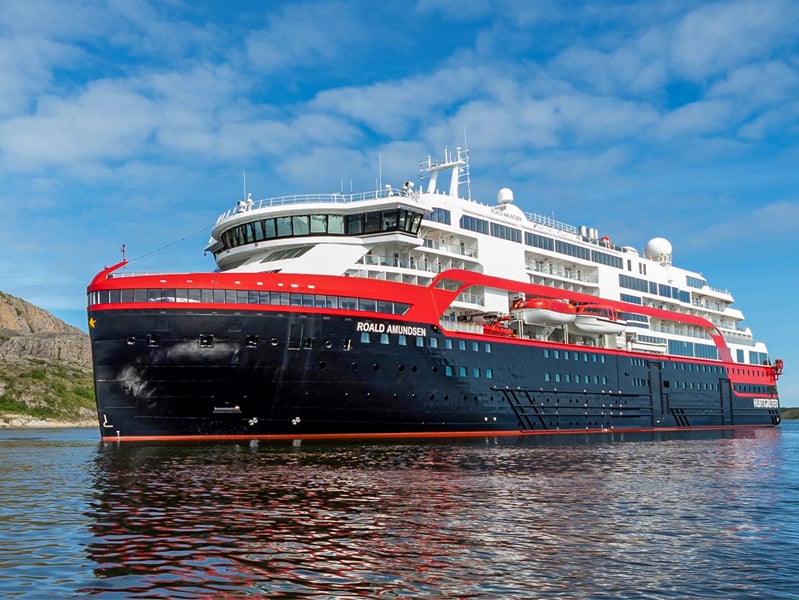
Expedition cruising puts its emphasis on smaller ships visiting remote and unusual locations. Instead of casinos and entertainers, a team of scientists provides daily briefings and analyses on ships such as the Ms Roald Amundsen.
With a long history of Scandinavian coastal service, Hurtigruten has become a significant and innovative player in the growing trend towards the Arctic, Antarctic, and small-town exploration.
Launched in Norway in 2019 with a maximum of 530 passengers, Hurtigruten’s MS Roald Amundsen is the world’s first hybrid-powered cruise ship. Named for the intrepid Norwegian explorer of both north and south polar regions, it uses four Rolls Royce-designed diesel engines.
One is a spare but is always connected to two large banks of rechargeable batteries. As a result, emissions are lower, and fuel savings can reach 20%.
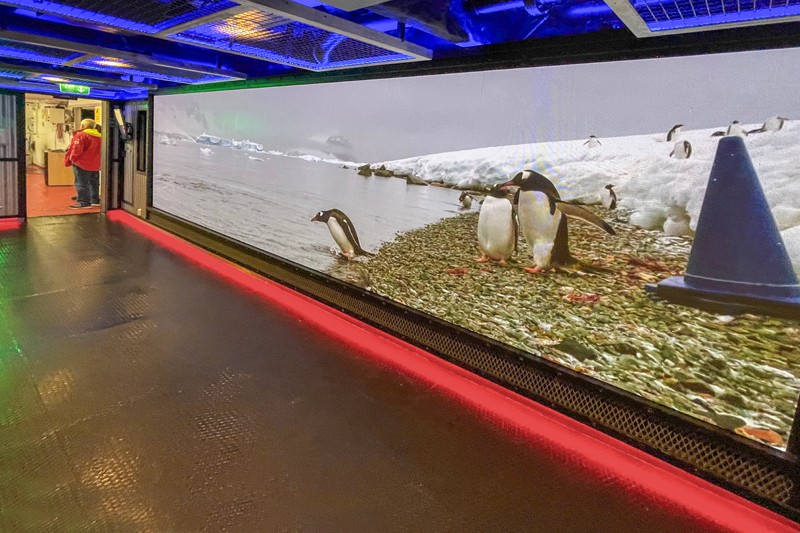
MS Roald Amundsen’s Unique Cruise
We joined the ship in Halifax, Nova Scotia after its first leg from Nome, Alaska. At the time the Roald Amundsen was several weeks into a unique cruise from Alaska and Canada’s Arctic all the way south to Antarctica. Then, with just 260 guests, the ship began an unusual seven-day cruise to Boston.
All newcomers are given complimentary, bright red waterproof jackets and are fitted for boots. Our itinerary was fascinating. We made a stop at remote Sable Island, then returned to mainland Nova Scotia and the UNESCO World Heritage fishing port of Lunenburg.
Following that were visits to three towns in Maine, followed by Cape Cod and finally Boston.
Twenty avid cruisers did not disembark in Halifax. They chose to stay on the ship for the complete Arctic to Antarctic itinerary. The 157 crew members – Norwegian officers, naturalists from several countries, and most service staff from the Philippines – welcomed the new guests, a mixture of American., German and British cruisers. Announcements were in English and German.
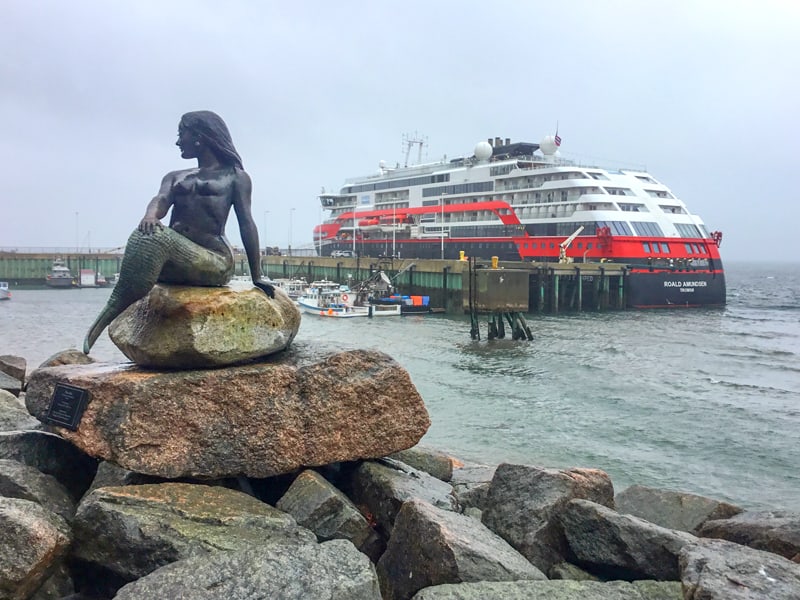
A Distinctive Ship
The Roald Amundsen, with its distinctive black, white, and red livery, is impressive. The interiors reflect modern Scandinavian design. There is an abundance of natural materials – wood, granite, wool, and linen – creating stylish and comfortable cabins and public areas. All cabins have ocean views, but there are 83 rooms with balconies and 53 suites.
All rooms are comfortable and well-equipped. Our suite had a walk-in closet with plenty of storage space. The king bed was particularly luxurious, with twin duvets, silky sheets, and excellent lighting. Guests are offered bath robes and slippers in various sizes (a rarity on any but the most high-end cruise ships). The complimentary wi-fi signal was usually excellent in rooms and throughout the ship.
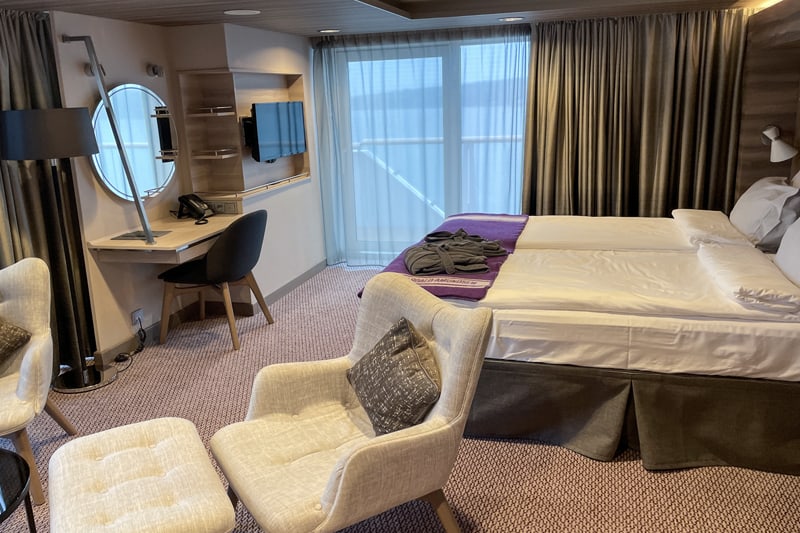
There are plenty of electric outlets, but all are European Style (round prong), so one does need an adapter. There’s a coffee maker and a fridge stocked with beer, soft drinks, sparkling water, and wine.
Paper and plastic are rare on the ship, and all guests receive a complimentary aluminum water bottle with refill stations on every floor. The Hotel Manager told us that Hurtigruten aims to be the most sustainable shipping company in the world.
Our room had an impressive 50-inch LED television with limited news channels (MSNBC and Fox from the US with Sky News and BBC from the UK). Also, the Atrium Lobby has a television that hugs a wall for seven stories with continually changing scenes from nature.
The “Boot Room” also had a huge horizontal TV with colorful scenes from Hurtigruten adventures. Impressive! You also find traditional Norwegian art (with many woodcuts) throughout the ship, much of it chosen by HM, the Queen of Norway, with several from her personal collection.
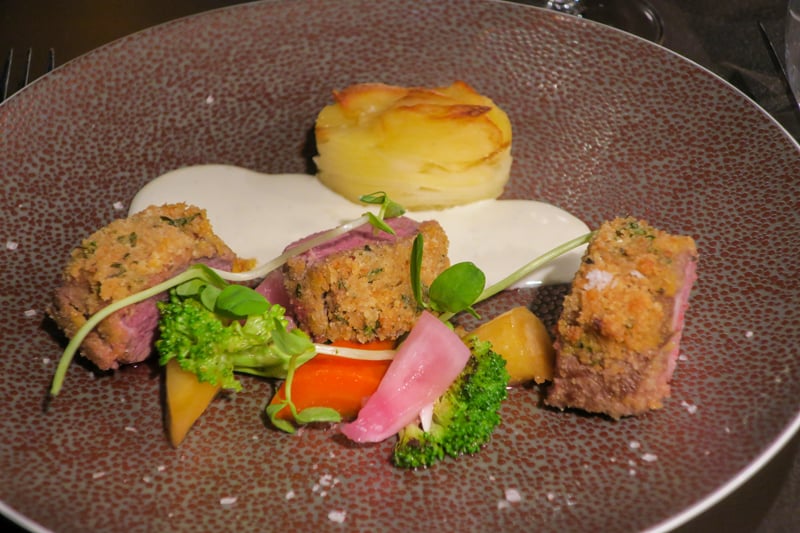
Roald Amundsen’s Star Chef
The British Executive Chef on Roald Amundsen is a former Michelin-star restaurant owner. David McDonald’s cuisine was generally excellent in all three restaurants, and the complimentary wine at lunch and dinner was of high quality.
Aune, the main dining venue, seats 240 at blond wooden tables and features many areas for just two guests in a bright, attractive setting. For all meals (breakfast and lunch buffets and a la carte dinners), the Maitre’ D records your room number and assigns a table when you enter the dining area. Very progressive!
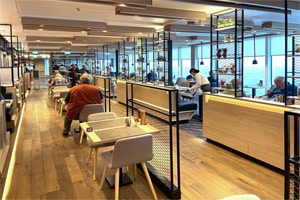
High-tech has replaced traditional paper menus, and guests are expected to order their meals from the Hurtigruten app. Everyone seemed equipped with a smartphone, so there was rarely a problem.
Fredheim is an informal corner for stylish street food. The diner atmosphere works well for an array of burgers, fries, and sausages but also Asian dumplings, tortillas, waffles, crepes, and a crab roll. Fredheim also offers tall, creamy milkshakes, the best we’ve ever had at sea.
The full-service restaurant is Lindstrom. Although designed for suite guests, others can enjoy the exemplary service and extra perks for 25 Euros a person. The lamb and bison dishes were especially tasty.
The only disappointment with dining during our week on Roald Amundsen was its lack of any East Coast seafood. Even though we started in Halifax and stopped in several important Atlantic fishing ports, the only seafood offered was from Alaska and the West Coast.
We were told there were communication problems with the European head office (this was Hurtigruten’s first visit to Nova Scotia). Still, for repeat cruises in 2023 and 2024, the fresh fish problem will be investigated and resolved.
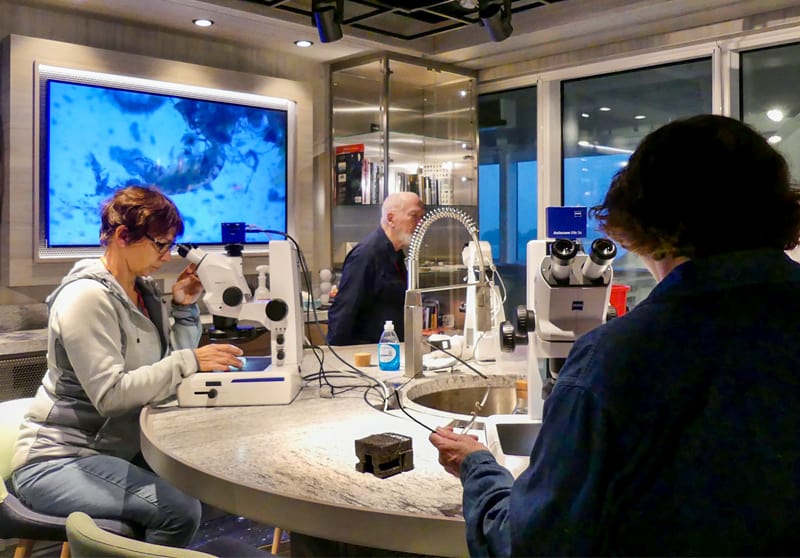
An Emphasis on Science and Learning
With its six expedition ships (two of which are now hybrid), Hurtigruten may not appeal to everyone. There’s no casino and no traditional evening entertainment (there is a piano in the Roald Amundsen’s main lounge, but no resident pianist). The emphasis, which most guests and we relished, was on science and learning.
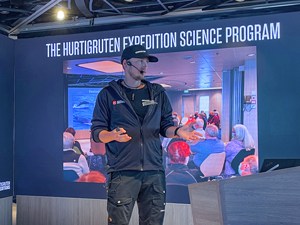
The Amundsen Science Center takes up significant space on Deck Six. It is rich in resources with a science library, maps, illustrations, a large, interactive touch table, and artifacts like skulls and walrus tusks.
Its prime attraction, however, is a series of specialized Zeiss binocular microscopes. One of them is connected to a large-screen TV.
Seven scientists, covering a wide range of specialties, often gathered seashore specimens like tiny copepods and gave illustrated lectures each evening in addition to talking about our next port.
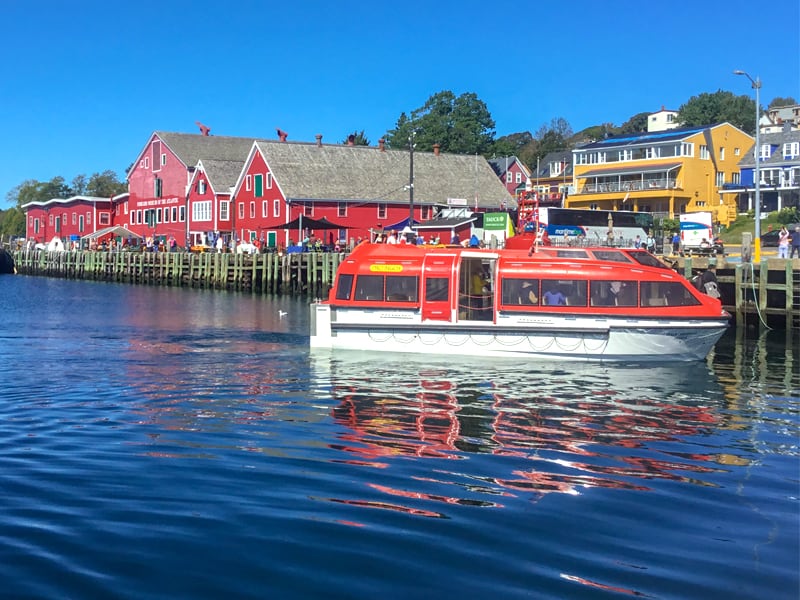
Non-Traditional Ports of Call
With non-traditional ports of call, Expedition ships need to be flexible. For example, landings on Sable Island, a Canadian National Park Reserve 190 miles east of Halifax, are by zodiacs.
Unfortunately, the Atlantic Ocean was just too rough the day we arrived. So instead, the captain gave us a complete circumnavigation of the 27-mile-long sand bar where, with binoculars, we could see the wild horses and thousands of gray seals.
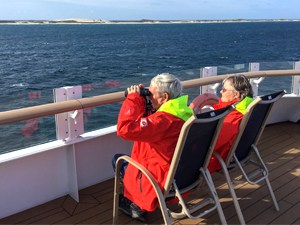
The next day’s weather was perfect in Lunenburg, and most guests visited the large and outstanding Fisheries Museum of the Atlantic.
The weather in Maine was variable, but, despite the rain, most guests got off the ship in tiny Eastport, next to the Canadian border. This easternmost ‘city’ in the US used to be the sardine capital of the world.
Our arrival in Rockland, Maine, required a tender transfer to the port, but, with bad weather, many guests stayed aboard. Bar Harbor, a popular stop for traditional cruise ships, gave guests on the Roald Amundsen the opportunity to visit Cadillac Mountain (the tallest mountain on the east coast of the US) and the rugged seascapes of Acadia National Park, the first U.S. national park east of the Mississippi.
You may also enjoy: A Guide to A Galapagos Cruise Vacation / A Sea Cloud Cruise, History with Sails / A Luxury Amazon River Cruise In Peru
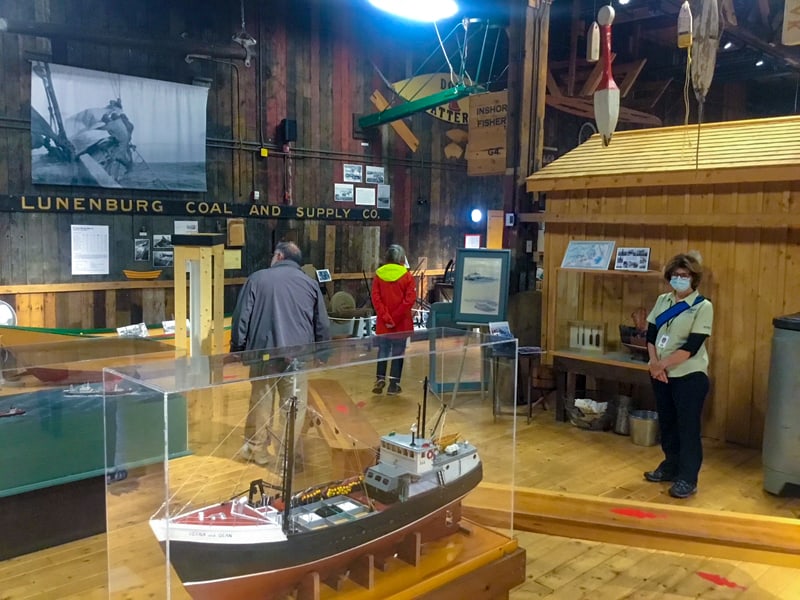
Change of Plans
Unfortunately, more bad weather made a visit to Cape Cod impossible. And with Hurricane Fiona churning up the Atlantic, the captain made a wise choice to head for Boston early for an extra overnight.
Most guests headed home from Boston on schedule the next day. Still, a few dozen of us stayed overnight at Hurtigruten’s recommended hotel, the elegant and historic Fairmont Copley Plaza.
Now celebrating its 110th anniversary, it was ideal for connecting to our 90-minute morning flight back to Halifax. And, missing Atlantic seafood on the Roald Amundsen, the lobster roll at the Fairmont’s Oak Long Bar + Kitchen was fantastic.
With expedition cruising becoming very popular, Hurtigruten plans to repeat the unique Halifax to Boston itinerary in 2023 and 2024. As the line refines its excellent product, the route should be a huge hit. That’s especially true for those cruisers wanting to avoid the massive, traditional cruise ships.

This article randomly appeared on my husband’s Google feed this morning We were on the same cruise from Halifax to Boston! I wonder if we met?! We were very excited to see this article and have since shared it on Facebook and Outlook
We completely agree that it was fabulous, even with the weather interruptions. We’ll definitely do another Hurtigruten adventure at some point in the future.
Hi Judy,
What a coincidence! I’m glad that you enjoyed your cruise as much as the authors, John and Sandra, did.
Jim